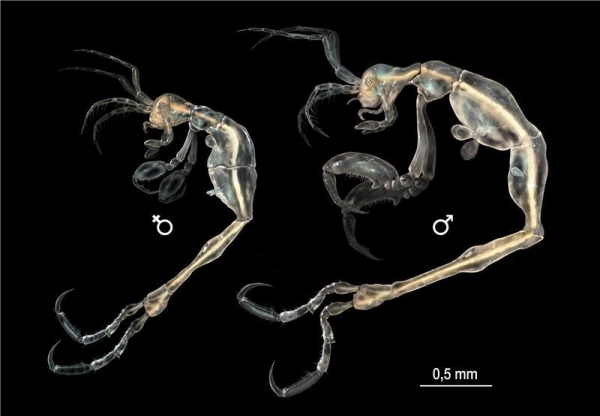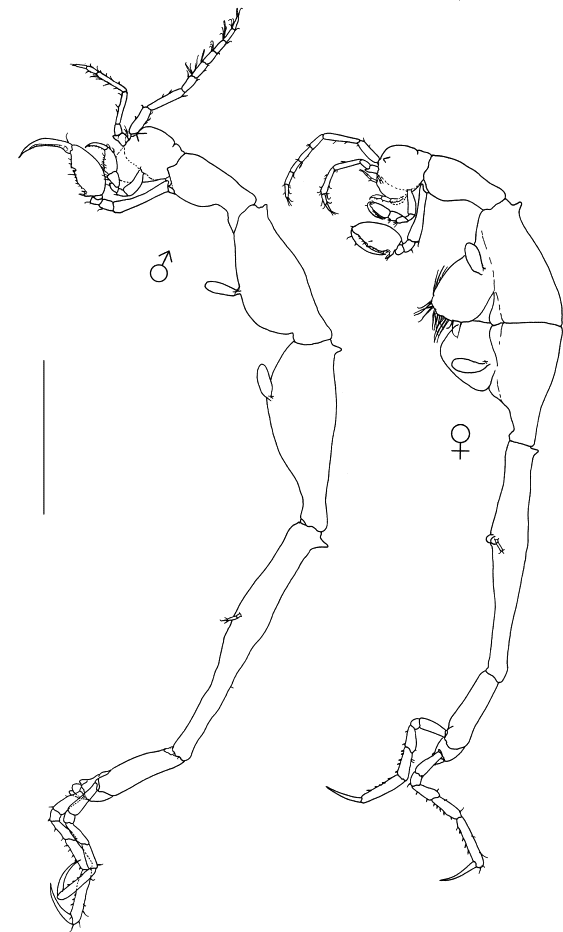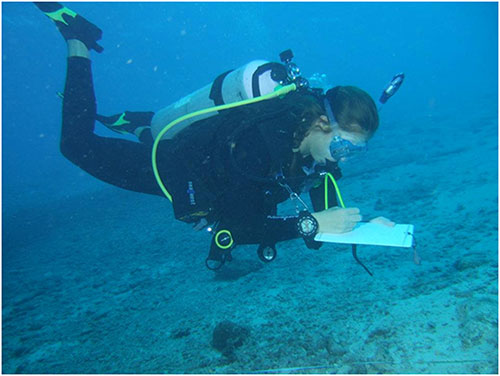Alien-like New Species Discovered Living In A Cave Will Make You Scream In Terror
A dainty, but menacing-looking new species of marine crustacean has been identified in California by an international team of researchers.
These rather scary-looking skeleton shrimp have been discovered in a cave off Catalina Island in California
The frail crustacean, which is only a few millimeters in length, was discovered by scientists from the University of Seville in Spain and the Museum of Natural History in Canada, who had published a taxonomic description of the new species in the journal Zootaxa.
A dainty, but menacing-looking new species of marine crustacean has been identified in California by an international team of researchers. Pictured is an illustration of female and male Liropus minusculus. (Photo : SINC)
Image via natureworldnews.comThe creature's name, Liropus minusculus, is a fitting one. Males of the species only measure around 3.3 mm, while females are even smaller at an average of 2.1 mm. Despite its diminutive size, the crustacean has features that distinguish it among its relatives.
The main author of the Zootaxa study, which provides the first documented evidence of a member of the Liropus genus being found in the northeast Pacific Ocean, said:
"This new species presents differences relative to other examples of the same genus in the dorsal protuberances on its body, as well as in its legs, pincers and abdomen," said José Manuel Guerra García.
Liropus cachuchoensis n. sp., lateral views of holotype male (MNCN 20.04/6072) and allotype female (MNCN 20.04/6073). Scale bar: 1 mm.
Image via els-cdn.comThe find will allow marine researchers to better understand the biogeographical patterns of the genus
"Specimens of the Liropus genus can be found in both the Atlantic and the Mediterranean. Taxonomic research on caprellid crustaceans are crucial to identifying them correctly and knowing which species we are working with in ecological research and other applied studies on marine bioindicators, uses in aquaculture, extraction of compounds of pharmacological interest, etc.," Guerra García said in a news release.
In his career, Guerra García has described eight genera and 62 species of caprellid crustaceans.
Guerra García also recently helped identify the presence the Paracaprella pusilla in Spanish waters. This species of caprellid crustacean is native to Brazil and likely arrived in Spain as a stowaway on a ship.
"Its arrival in the Mediterranean is linked to that of marine hydrozoa, which stick to the shards of boats. Living on these hydrozoa brings them many advantages for finding refuge and capturing their prey, because the Paracaprella pusilla is fundamentally predatory and feeds on copepods -- very small crustaceans -- which become trapped in the hydrozoa," the scientists highlight.
sciencedaily.com

